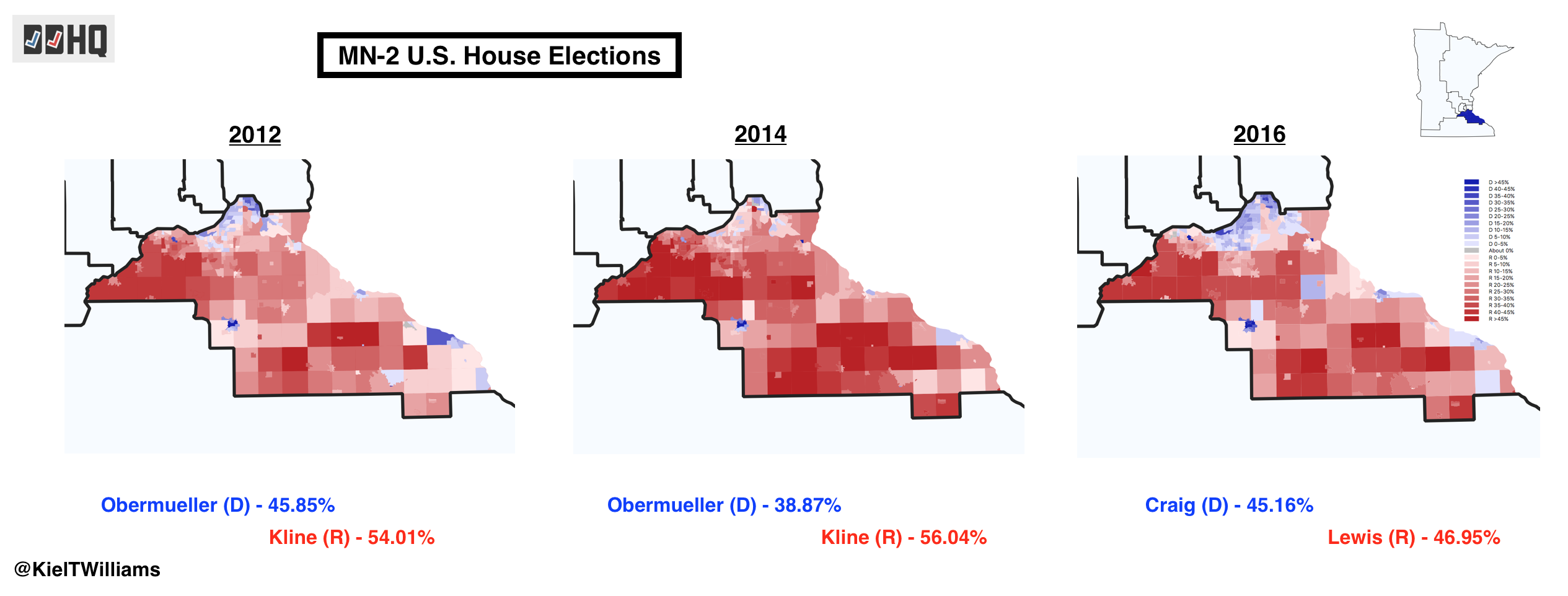Today we’ll continue our look at Minnesota’s competitive House elections. We will focus now on the districts where Republicans are in serious danger, MN-2 and MN-3.

Minnesota’s 2nd congressional district – containing the cities of Eagan and Burnsville, south of Minneapolis – would probably be competitive even in a neutral national environment. Represented by freshman Jason Lewis (R) following the 2016 retirement of John Kline (R), this R+2 district has remained competitive over the past decade, and voted for Donald Trump by a margin of only 2 points. Even in the more favorable environment of 2016, Lewis failed to outrun Trump, defeating medical executive Angie Craig (D) by a similar 2-point margin.
This year, Lewis is again a top target for Democrats. He faces a rematch with Craig, who has thus-far out-raised him. The Øptimus model views the race as a pure toss-up, giving Lewis a 46% chance of survival.

The situation for Republicans appears even more dire in Minnesota’s 3rd congressional district, encompassing the western suburbs of Minneapolis. Represented by Erik Paulsen (R) since 2008, the district has not voted for a Republican presidential candidate since George W. Bush in 2004. After narrowly voting twice for Barack Obama, Hillary Clinton won here by 10 points in 2016. Paulsen proved resilient in the same environment however, defeating Minnesota state senator Terri Bonoff (D) by 14 points.
Paulsen’s position looks much less secure this time around. He faces Democratic nominee and businessman Dean Phillips. Paulsen has consistently trailed in the polls, and he looks like the Minnesota Republican most likely to lose reelection. The Øptimus model gives him a 37% chance of holding-on.